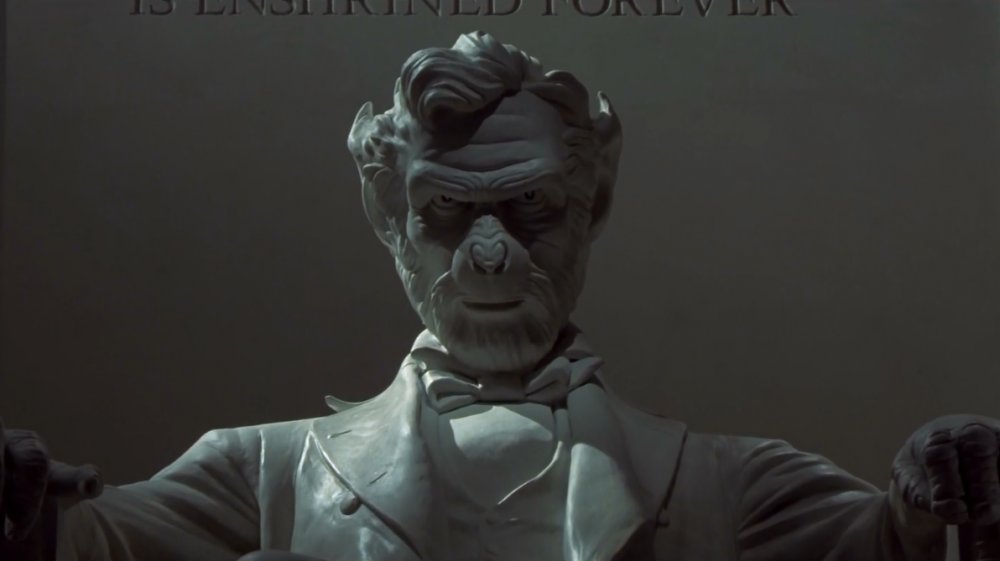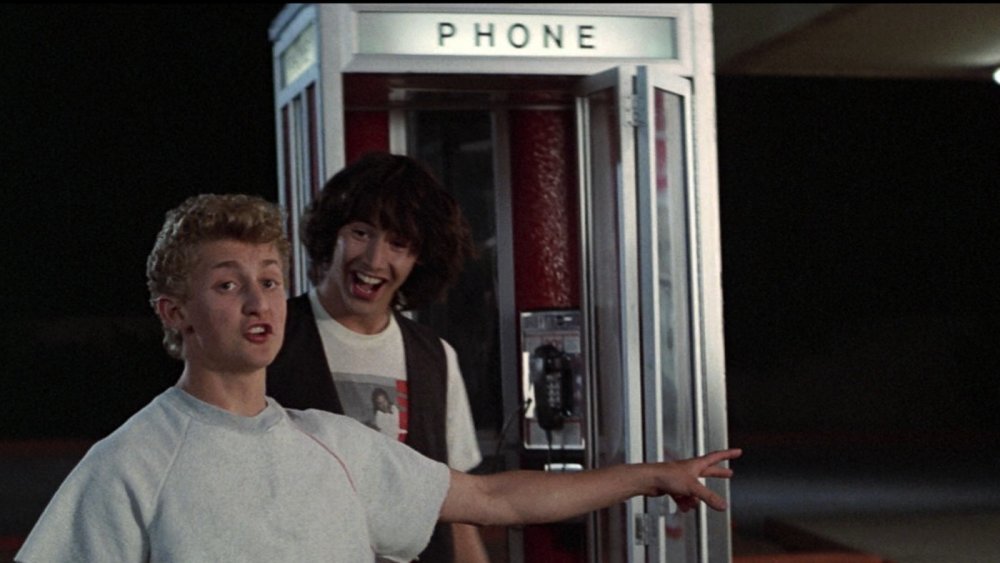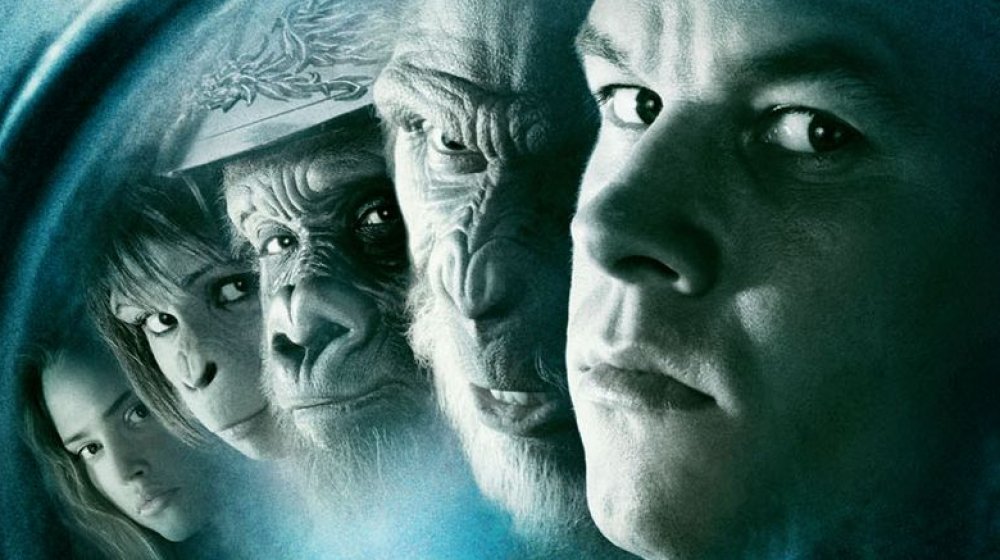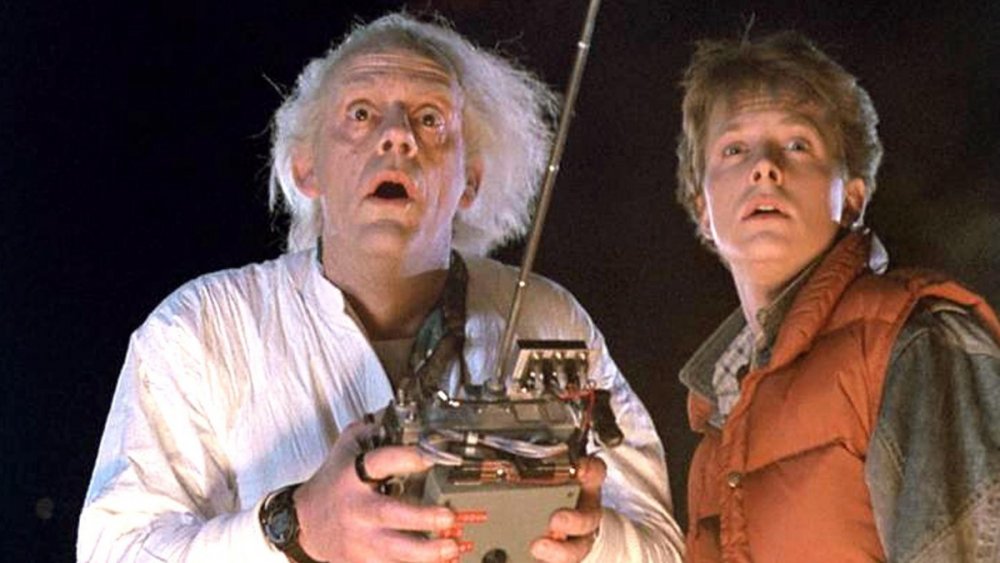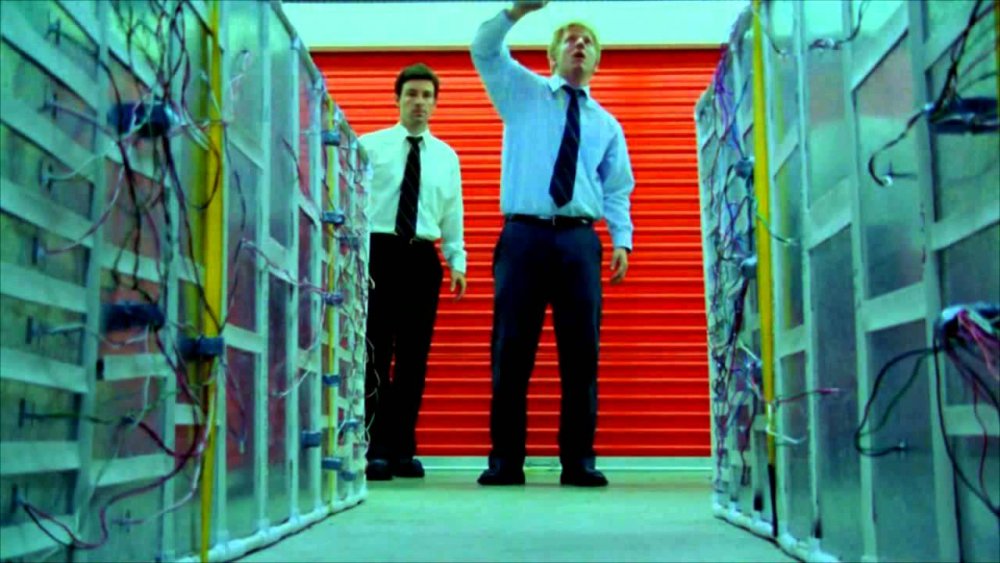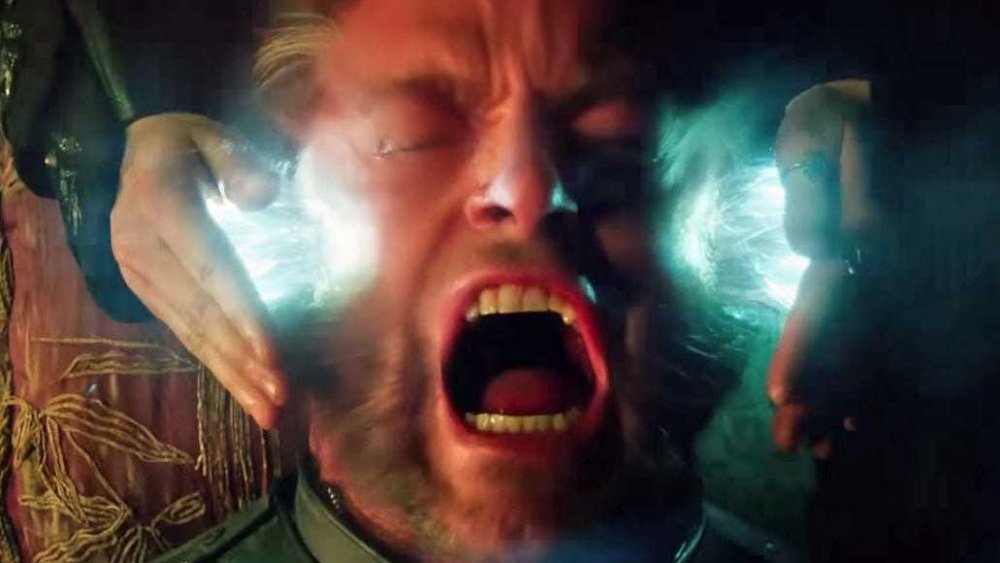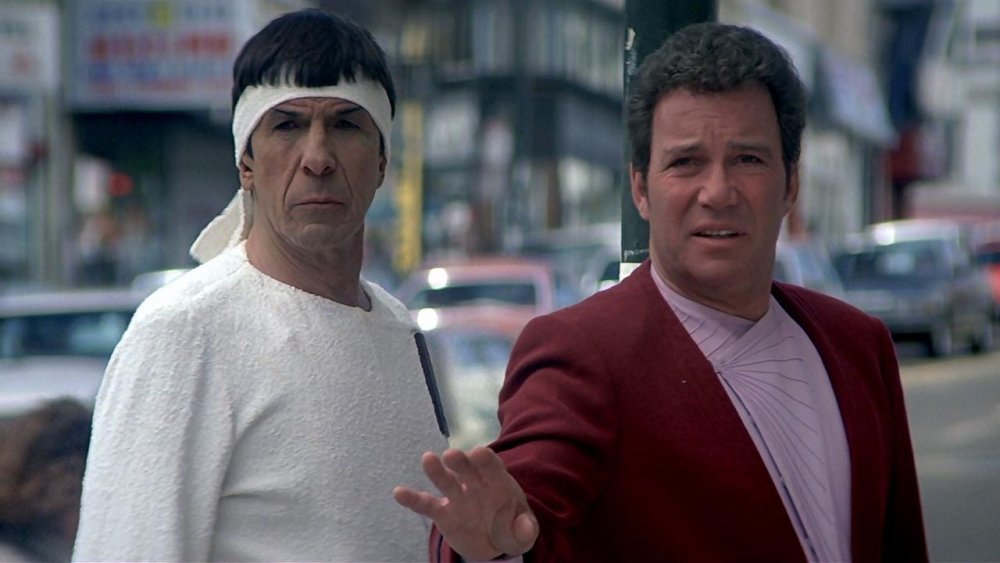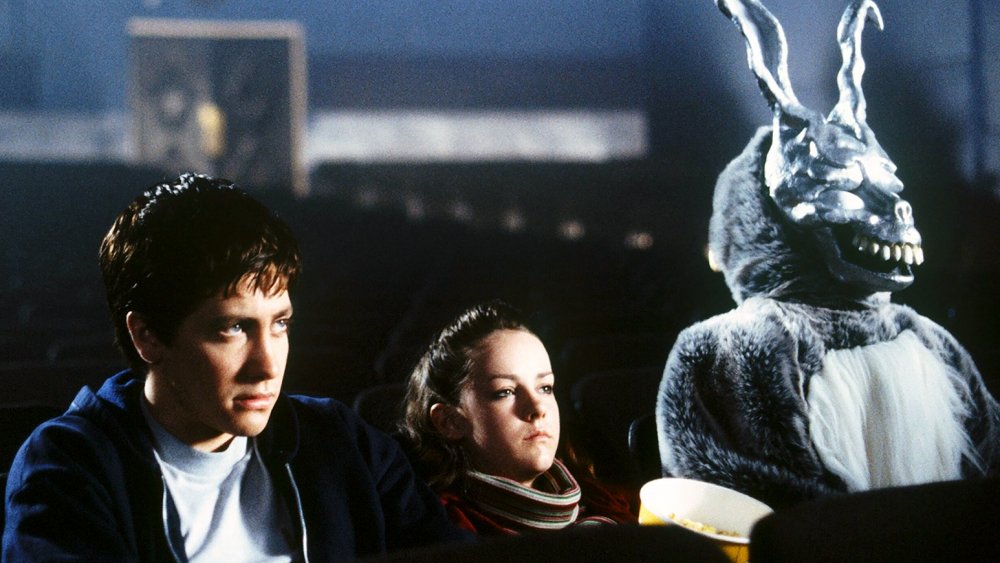The Most Confusing Time Travel In Movies
Time travel has been a storytelling trope for as long as we've been telling stories. The first recorded instance of what could be called "time travel" dates back to a Hindu text written some 2,400 years ago, and since then we've dreamed up a seemingly endless number of explanations as to how time travel might work – to say nothing of the shenanigans we've imagined it causing.
While a lot of undeniably great tales have come out of our species' desire to live in (or at least visit) a time other than our own, the thing about time travel is that it often doesn't make a whole lot of sense. Between dubious technical explanations, confusing paradoxes, and a lot of outright nonsense, many movies have tried and failed to make the time travel concept work. That doesn't necessarily make them bad movies — in fact, many of these movies turned out to be so entertaining that audiences are more than happy to overlook logical inconsistency. Other movies, however, fail to justify their own convolution, let alone make it entertaining.
Whether good or bad, here are a few movies where time travel could have used a bit more thought.
Bill and Ted's Excellent Adventure
In Bill & Ted's Excellent Adventure, a pair of teenage slackers save the universe (and score an A+ on their history report) with a little help from Socrates, Billy the Kid, Joan of Arc, and other historical luminaries. How did they accomplish this feat? By using a time traveling phone booth sent from the future, where a utopia built on their music has emerged. While the phone booth is most certainly a questionable vehicle for cruising through the calendar, our problem isn't with the means, but the ends.
Shocking though it may be, the movie about a time traveling phone booth doesn't make a whole lot of sense. Here's the issue: Rufus (played by the late, great George Carlin) is sent back in time from a future that idolizes Bill and Ted for creating music that brought peace to the galaxy. But Bill and Ted were only able to create said music because Rufus went back in time to come to their aid. But Rufus only went back to help them because of their godlike status in the future, which arose from their music. But they only made that music because Rufus traveled through time to help them do it ...
You see the problem here? It's a dog chasing its own tail. In time travel lingo, this is called a "bootstrap paradox" in which cause and effect are intertwined. And while the movie is excellent, it simply doesn't make any sense.
Planet of the Apes
Time travel has always been a prominent feature of the Planet of the Apes movies. But the whole concept went famously awry with Tim Burton's 2001 reboot.
In this version of Planet of the Apes, American astronaut Leo Davidson, played by Mark Wahlberg, travels through time to an Earth where intelligent apes have taken over. So far, we're more or less in line with the original Charlton Heston version. Things diverge when Leo incites the captive humans to rebel. The story strays into even further ... let's call it original territory, when Leo escapes and lands back on the Earth of his own time. After crashing in Washington D.C., Leo walks up to the Lincoln Monument, to find that it now has the face of an ape. That's right: even his Earth is now ruled by apes.
Audiences and critics alike soundly rejected this ending, decrying it as nonsense. There's a reason 2001's Planet of the Apes is regarded as the worst of the series, and it's not just because of Ape Lincoln's creepy-looking nose.
Back to the Future
The Back to the Future films are the kings of time travel cinema. It's right there in the name, after all. But here's the thing—they're absolutely riddled with paradoxes and inconsistencies.
For example, why don't Marty's parents in 1985 recognize their son as the Calvin Klein who played such a key role in their relationship in 1955? If Doc Brown left a DeLorean hidden in a cave for Marty to find 100 years later, as is revealed in Back to the Future Part III, shouldn't the original DeLorean that Doc hid still be there when Marty drives back to 1885? The list goes on, but the biggest paradox involves Doc Brown in all three time periods. Now, part of the reason Marty has to go back to 1885 in Part III is to save Doc, who he'd learned would be killed by Biff's ancestor from the Doc of 1955. But here's the thing—if 1955 Doc knew he would get shot in 1885, then grew to become 1985 Doc who then traveled back to 1885, shouldn't he have known that his death was impending and therefore been able to avoid it?
Does it ruin the movies? No. Does it make any sense? Also no. But this isn't a list of great time travel moves—it's a list of confusing time travel movies, and Back to the Future is about as confused as it gets.
Primer
Filmed on a razor-thin budget of just $7,000, 2004's Primer gained a cult following in large part because of its mind-bending take on time travel. Primer tells the tale of two friends who accidentally invent a time travel mechanism, which they immediately begin leveraging for their own benefit by using it to get advanced information about the stock market. Things seem to be going smoothly at first, but as multiple timelines, doubles, and double-crosses begin to overlap, things get dicey for the characters and confusing for the viewer.
The movie was written and directed by Shane Carruth, an ex-engineer who refused to dumb down any of the science for the audience — in fact, Primer is loaded with scientific explanation. Carruth decided to trust the intelligence of his viewers enough to let them decipher the complicated plot via repeat viewings. If you're going to sort out the many threads of Primer, repeat viewings are a must — but if the film's ardent fans are anything to go by, many find the movie compelling enough to do just that.
Looper
2012's Looper follows Joe — portrayed by both Bruce Willis and Joseph Gordon-Levitt — a man caught up in a crime syndicate that uses time travel to dispose of bodies. Whenever the syndicate wants to kill someone, they send that person back through time, where they're immediately killed by a hitman known as a "looper." Complicating this is the fact that, at some point, the syndicate will want to sever their connection to said looper. Therefore, they send the aged looper back, for the younger version of themselves to kill in a process called "closing the loop." This is what happens to Willis and Gordon-Levitt, except the former decides to avoid his death by convincing the latter not to kill him. So far so good?
While this plot doesn't seem so confusing on its surface, things start to fall apart under closer examination. Here's the problem: if Old Joe goes back in time and convinces Young Joe not to kill him, then Young Joe's entire future is changed. But for Old Joe to exist and come back to change Young Joe's mind, Young Joe still has to grow up to make the same decisions as Old Joe, including going back in time to change Young Joe's mind.
You see the problem here? Regardless, Looper is a great movie with a killer ending — just don't get hung up on how it got there.
X-Men: Days of Future Past
The X-Men movies range from fantastic to utterly terrible, and boy howdy, are there a lot of them. 2014 complicated the merry band of mutants even more with X-Men: Days of Future Past, which brought time travel into the roiling mix.
This was accomplished by having Kitty Pryde use her powers to transmit Logan's consciousness to 1973, to prevent a string of events leading to the eventual destruction of mutants in 2023. On its face this seems pretty straightforward, but the moment you start asking questions ... you only get more questions.
For example, wouldn't Logan changing things in 1973 instantly alter the events that resulted in him being sent to the past in the first place? And what about the happy ending? Logan prevents the assassination of Trask, sure, but in doing so, his actions dramatically changed the course of history. Yet somehow, Professor Xavier's students end up at his school anyway, as if events progressed as they had in the original timeline?
Maybe it's best not to think about it too hard. But the fact is, the X-Men movies require their own timeline, and keeping track of it is a lot to ask of audiences already burned by the lows of X-Men: The Last Stand.
Star Trek IV: the Voyage Home
Directed by Leonard Nimoy, Star Trek IV is delightfully weird. The action is launched when an alien probe journeys to Earth because it can no longer hear the songs of humpback whales. The reason it can't hear the whales is because they're long extinct, which angers the probe for reasons that are never precisely explained. It proceeds to decimate the planet.
From there, the crew of the Enterprise decides to travel back in time by sling-shotting around the sun (which makes no sense—their ship already goes faster than the speed of light) so they can go back to when humpback whales were still alive, pick up a couple, then sling-shot back around the sun the other direction to return to their own time and repopulate the Earth with the whales.
Okay, while none of that makes sense, here's the real question: Why, instead of bringing a pair of whales back to their own time, didn't our heroes simply prevent their extinction in the first place? Because it would risk altering the past, you might say? Well you can forget about that, because they spend much of the movie stumbling around the 1970s as obvious as can be. Their actions there already could have changed the future in an infinite number of unforeseeable ways. But hey: The whales return, and the probe returns to its far-off home, satisfied. Hooray?
Avengers: Endgame
Avengers: Endgame does a pretty good job of setting up the rules of its use of time travel. As the newly-professorial Hulk explains, changes made by travelers don't alter the future of their original timeline, but instead create a new alternate timeline that follows the course of the altered events. In other words, you can go back and kill baby Hitler, but when you get back home he won't have been killed in your universe, but in a splinter universe you created when you did the deed.
Seems simple enough, but here's the thing: After the defeat of Thanos, Captain America went back in time to return the Infinity Stones to their proper places, then went back to a point when he could stay with his beloved Peggy and live his life together alongside her. How, then, did old Steve Rogers end back up in the original timeline to pass his shield on to Sam Wilson? Shouldn't his appearance in the past have altered events, thereby causing a splinter timeline universe where he would have lived out his life? And wouldn't he be the second Steve Rogers in that universe, the first Cap still being frozen in ice?
The directors Russo gave explanations for all of this in subsequent interviews, but the Endgame ending remains confusing – if still incredibly entertaining.
Terminator: Dark Fate
In the original Terminator film, Kyle Reese is sent back in time by John Connor to protect his mother Sarah Connor, knowing all the while that Reese would become his father. This is a classic paradox: Connor would never be born if he didn't send back Reese, but Reese would never be sent back if Connor wasn't born to send him in the first place, but if Reese doesn't go back then Connor will never be born...
So time travel confusion is par for the franchise course. Dark Fate ups the game by saying, okay, the Connors successfully averted Judgement Day, but the machines had sent back another Schwarzenegger-style terminator, which still exists even though now the future it was made in never happened, and this terminator kills John Connor. And even though Skynet never ends up happening, a different AI system called Legion decides to pull a Skynet and send back its own version of a terminator (that for some reason is very similar to Skynet's terminators) to kill a new future resistance leader. The Schwarzenegger-terminator that killed John Connor even goes as far as saying it was "sent from a future that never happened." What?
Little of Terminator: Dark Fate makes any sense at all, but that's okay. At least it pulls off whatever it's doing better than whatever Terminator Genisys did.
Donnie Darko
2001 cult classic Donnie Darko follows the titular Donnie, who either befriends or is haunted by a ghostly figure in a bunny costume called Frank, who tells Donnie that the world will end in 28 days. From there a ton of weird, inexplicable stuff happens, perhaps the most notable occurrence being when a bubble-tube emerges from Donnie's chest and leads him around.
We've explained Donnie Darko's odd ending in depth already, but it never gets less confusing the more one dissects it. As it turns out, most of the details are revealed in a fictional book given to Donnie by his teacher called The Philosophy of Time Travel that is filled with explanations relating to a "tangent universe," "the living receiver," the "manipulated dead" and an "artifact." Pages of this book were made available on the internet, but the film remains a complex web of airplane accidents, Smurf fandom, and teen angst. We'll probably never completely understand Donnie Darko, but like so many movies involving time travel, that's fine — the fun is in the complex journey.
